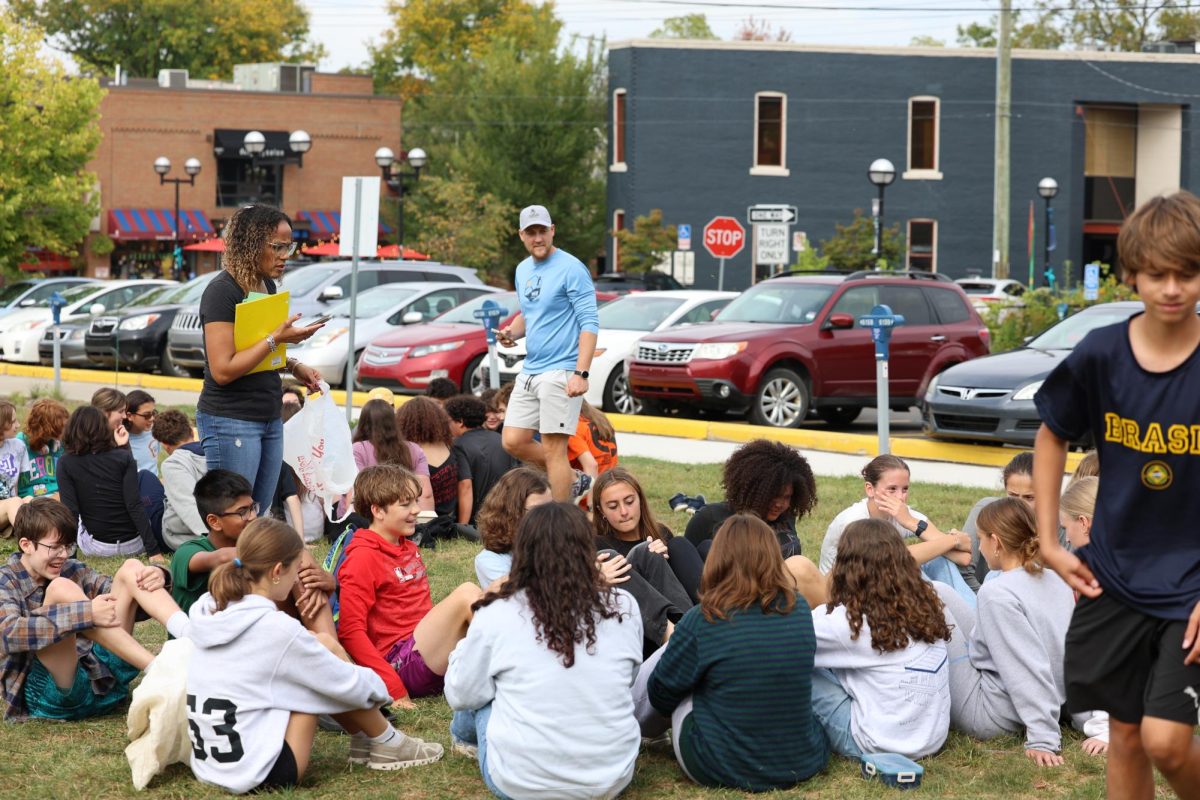
Along with a new class of freshman arriving at Community next fall there could be a crop of very different residents. The CHS ecology club has applied for a grant to fund the building of ten bat houses. Two of these would stay on the Community campus and the other eight would be dispersed around the Ann Arbor area.
Although bats might not seem like desirable animals to have living at CHS, they are an endangered species that are often negatively stereotyped. Bats are an important link in the Michigan eco-system. Nine types of bats are native to Michigan. These are the Big Brown Bat, the Little Brown Bat, the Hoary Bat, the Eastern Red Bat, the Tri-colored Bat, the Silver Haired Bat, the Indiana Bat, the Northern Long-eared Bat and the Evening Bat.
“Bats are really an important mammal to have around. They can help control bug populations and they’re endangered because they have such a bad stereotype associated with them, you know like Dracula or that they can give you rabies,” said Courtney Kiley, CHS science teacher and sponsor of the ecology club.
By providing habitats for these animals Community High will be protecting an endangered species that is often persecuted even though it is ultimately helpful to humans.
“Because they are losing their habitat of hollowed our trees and stuff, they live in peoples’ attics. By providing bat houses for them to live in then hopefully it will increase their population but also give them a better place to live,” said Kiley.
Having bat houses on the CHS campus will not interrupt proceedings during the school day. In fact, students and teachers will probably not notice any effects from the bat houses.
“They’re nocturnal so they’d fly around at night not really while we’re at school. They just hang out in these little bat houses and sleep upside-down during the day. And then at night when bugs come out they just fly around during the summer months,” said Kiley.
Zoe Fuller, a CHS junior was in charge of writing the grant for the ecology club. They find out if the funding is granted on Monday, March 14th. If they receive the money the ecology club will build the bat houses in April and hang them on the south side of the building.
“The whole idea is that we’ll put two outside, and have eight houses left over and then the ecology club kids can go out and teach middle-schoolers and elementary-schoolers about bats and kind of make it a community project,” said Kiley.
According to The Organization for Bat Conservation based in Bloomfield, Michigan, many bat houses are not hung properly or are not he correct shape. If this is the case they may only attract enough bats to fill ten percent of their capacity. Bat houses that are hung correctly average over 80 percent occupancy.
Ecology club members will teach younger students about the importance of bats and bat houses in May if the project is completed on time. The club plans to purchase kits to build bat houses from a bat conservancy. If this grant money is not allocated they will fundraise in additional ways to cover the cost of the project.
Fuller, who is spearheading the effort, looks at this project as a way to become more involved in the community and educate herself about a misunderstood species. “I was kind of looking for a way to be more involved in the ecological community because I was just going to the meetings so I thought it would be a good, writing the grant,” said Fuller.
The ecology club hopes to complete their project before the end of the school year to allow bats to move into the bat houses before the season of peak activity in the summer months.
Stay tuned for more information about the bat house project and other Ecology Club efforts.
The CHS Ecology Club meets on Mondays at lunch in Courtney Kiley’s room #317.
To learn more about bats go to
http://www.batconservation.org/









